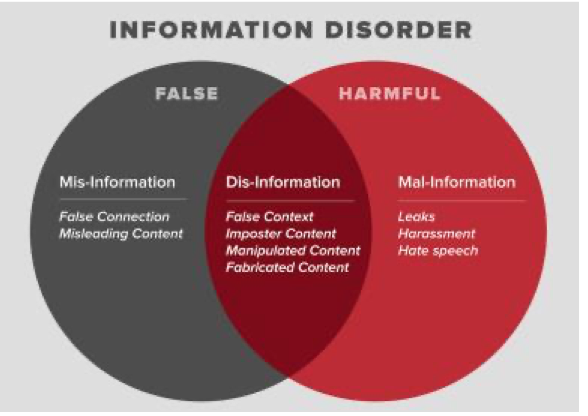The Study About Dis-Information You Should Read
“Information Disorder” is one of the best studies to read if you want to get involved in the fight for trustable content. Written by Claire Wardle and Hossein Derakshan, two experts in the field, the study provides a structured overview. This helps to first understand the problem of false and falsified information. The study goes beyond simply describing the problem. Instead, it provides a “framework for policy-makers, legislators, researchers, technologists and practitioners” who need to work together for results.
A need for collaboration
The report acknowledges that the phenomena are not new. False rumours and campaigns using false information existed before the internet. What has changed recently is the scale of “information pollution”. False information can spread faster, making it more complex to provide correct facts. “Information Disorder” suggests that there is an urgent need to work collaboratively to find solutions. To get there the report provides a detailed framework of possible actions.
As a helpful overview, the report visualises the three key forms of information disorder, side by side.

From just false to outright harmful: Forms of information disorder. Source: Information Disorder, 2017.
- Mis-information is when false information is shared, but no harm is meant.
- Dis-information is when false information is knowingly shared to cause harm.
- Mal-information is when genuine information is shared to cause harm, often by moving information designed to stay private in the public sphere.
The study suggests clearly to not use the label “fake news”, with reason:
“In this report, we refrain from using the term ‘fake news’, for two reasons. First, it is woefully inadequate to describe the complex phenomena of information pollution. The term has also begun to be appropriated by politicians around the world to describe news organisations whose coverage they find disagreeable. In this way, it’s becoming a mechanism by which the powerful can clamp down upon, restrict, undermine and circumvent the free press.”
Information Disorder, 2017
Why it matters: If we want to curb the amount of wrong information we must understand first that an unintended communication mistake has to be separated from a campaign using entirely fabricated info. This applies to both technical tools against such information as well other forms of activism in this space.
The study asks the key questions: Who is creating disinformation? Why are they doing it and what are their goals? This is extremely important for any initiative in this field: Only when we understand why some groups use this instrument we have a real chance to block, filter or expose intentional mis- and mal-information.
As the study comes from two authors with a writing/journalism background they take a look at how and why people consume such content and why – at times – they start to belief in what is presented them and even re-distribute the content. Why is this? “A key argument within this report, which draws from the work of the scholar James Carey, is that we need to understand the ritualistic function of communication. Rather than simply thinking about communication as the transmission of information from one person to another, we must recognize that communication plays a fundamental role in representing shared beliefs. It is not just information, but drama”
The role of social platforms: “Information pollution” can affect all complex topics – health and medical, economy and ecology. As such the occurrence of false information and the use as a tool is not new. But a difference now is that social media platforms amplify the reach and encourage users to post material which might earn them approval from others – through likes and other subtle forms of positive feedback.
“It is not just information, but drama”
INFORMATION DISORDER, 2017
Step by step the authors develop a framework of recommendations and actions for multiple interest groups: Administrations, public bodies, governments, the civil society and – of course – media organisations. What makes the study helpful is that these lists of tips are straight-forward and simple. In combination, one could hope though that the numerous counter-activities help to fight information disorder, over time.
Download the 2018 version of the report here: Information Disorder (free, no registration)
